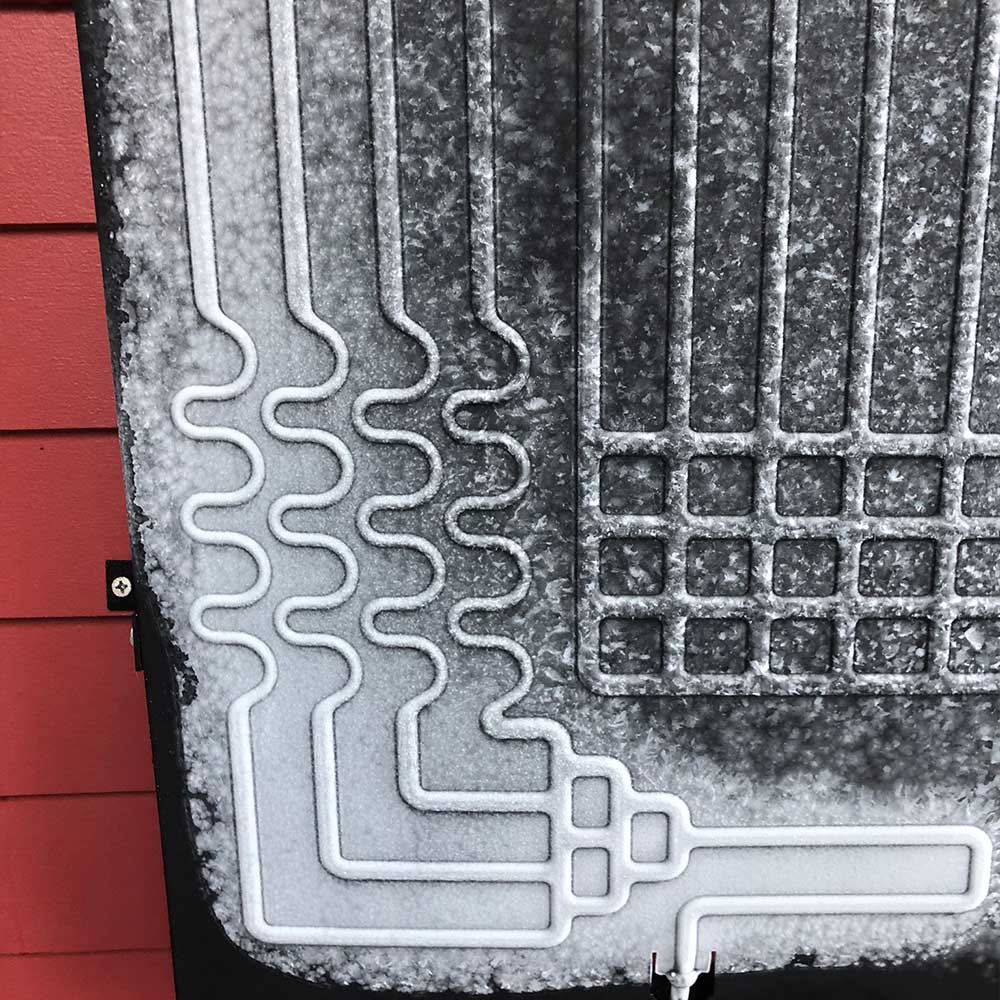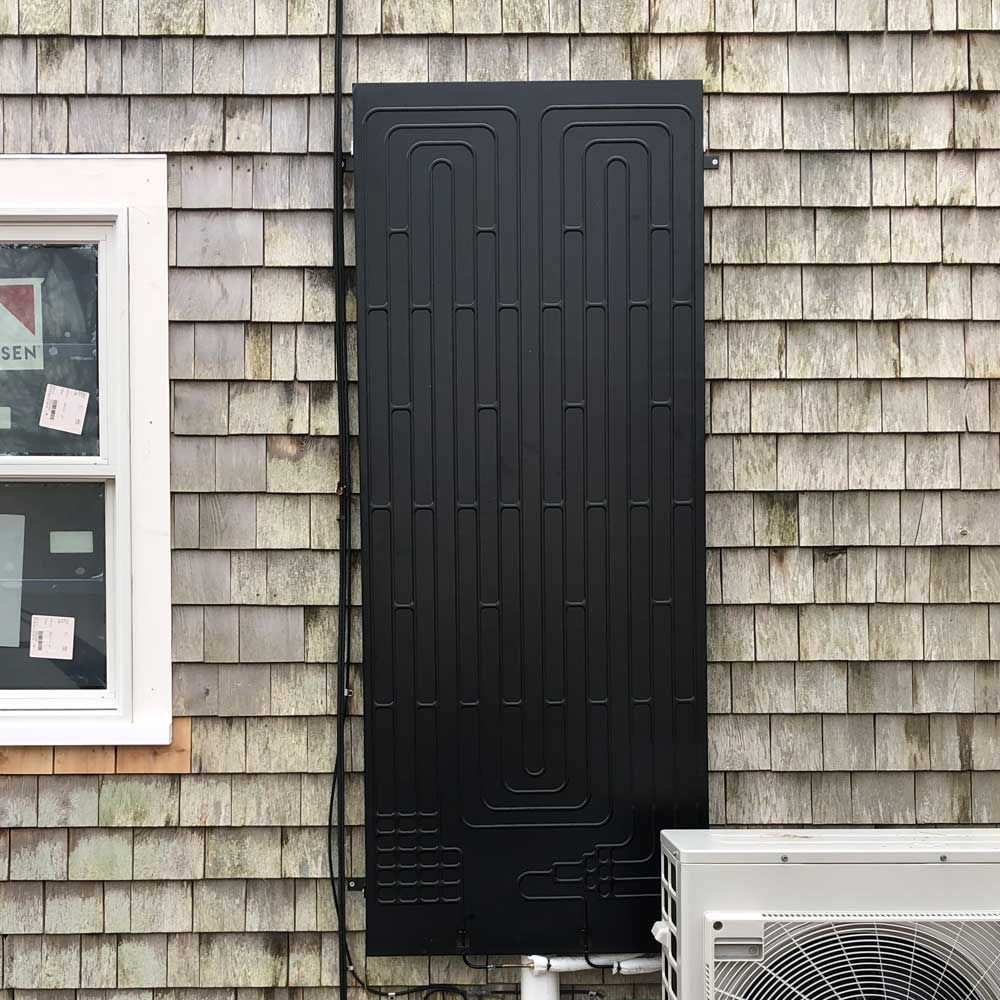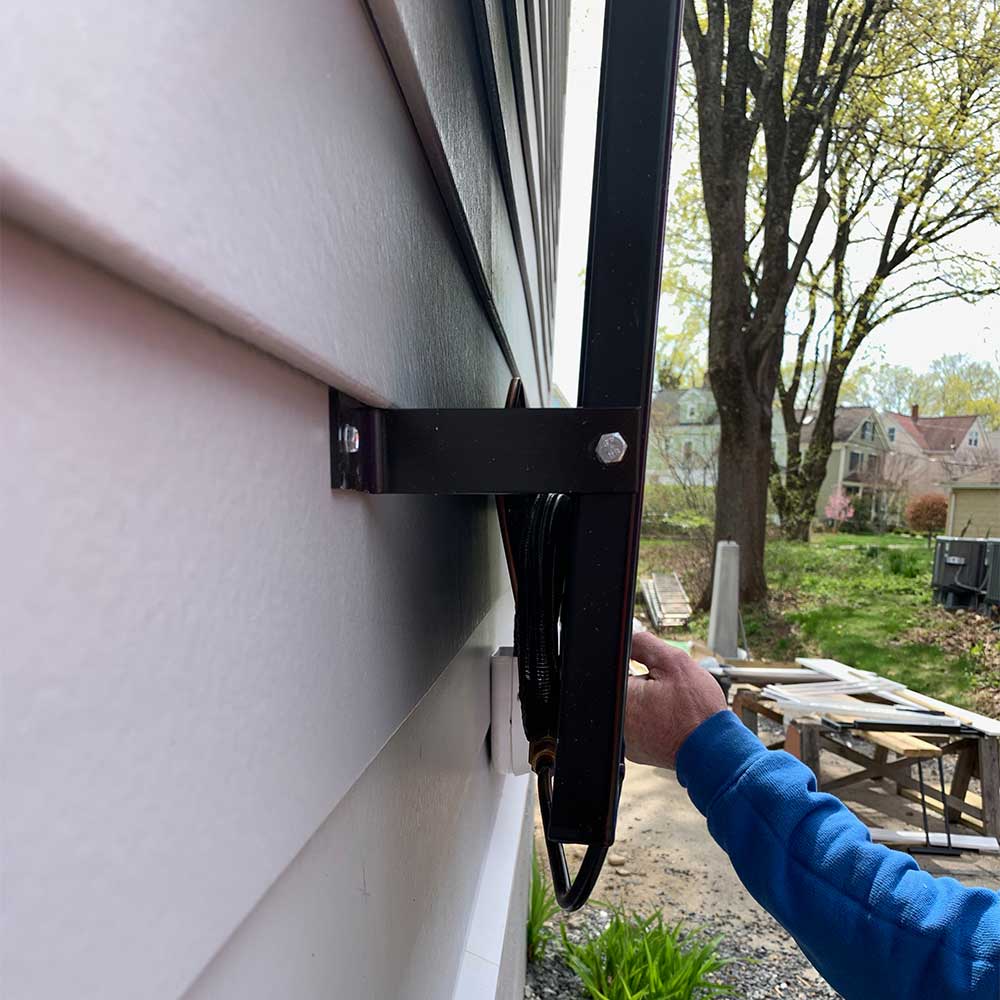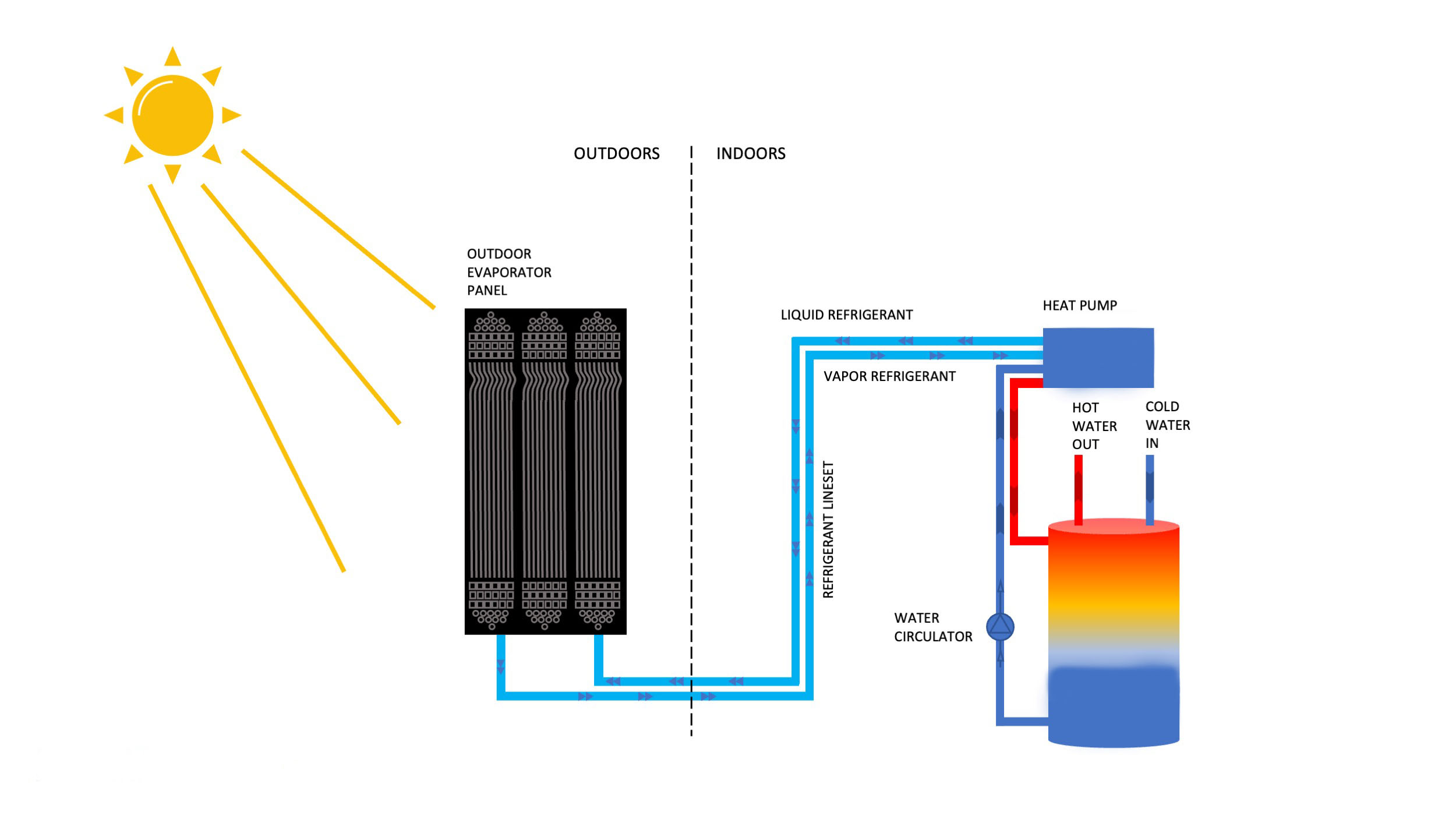HOW DOES IS IT FUNCTION?
SA-HPWHs are designed to harvest energy for 365 days a year, 24 hours a day.
The revolutionary thermodynamic panel from Solar Heat Pump functions as a heat exchanger by using air to evaporate circulating refrigerant from a liquid to a gaseous state, day or night and in any weather. A modest electric compressor powers the device—imagine a typical refrigerator. When the water temperature in the tank falls by 10°F below the desired set point temperature, the operation is triggered. Next, at a temperature lower than the surrounding air, liquid refrigerant is pumped via the external thermodynamic panel. Even on the coldest winter night, this is feasible. Heat from the somewhat warmer surrounding air travels through the liquid refrigerant as it circulates through the thermodynamic panel, heating it over its boiling point and causing it to evaporate into a gas. After being compressed to reach 230F, the refrigerant is then sent back to the condenser unit, which is often placed next to or above the storage tank. From there, it is routed via a heat exchanger to heat the drinkable water that is kept in the tank. The refrigerant cools and condenses back into a liquid condition as it transmits heat, making it ready to go through the cycle again.
A note on water heaters that are "hybrid" or "air source heat pump"
Hybrid water heaters are available in shops and are inexpensive and highly efficient, but this efficiency comes at a hidden cost: a hybrid water heater uses the warm air from the household heater to heat hot water when the system is running during the cold season. The heated air in a hybrid water heater is consumed, and the cold air it releases must be warmed by the heating system. Overall, it's like opening a window in your house during the cold.
In some southern climate applications—where water heaters are occasionally housed in unheated garages—hybrid water heaters might be an excellent option if it's desired to chill the room.



